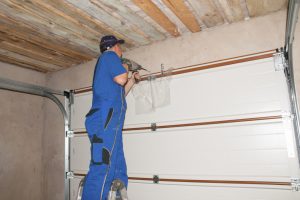- Invest in the right equipment, such as pumps, valves, hoses, and fittings, to ensure the safe and efficient transfer of liquids.
- Monitor real-time data with monitoring systems to identify potential problems quickly.
- Secure vehicles and routes that meet safety standards for hazardous materials transportation.
- Create emergency protocols, including designated contacts and spill kits for responding to accidents.
- Train staff on using safety gear and protocol for dealing with leaks or spills.
Liquid logistics are essential for many industries that rely on liquids—from processed foods and beverages to pharmaceuticals, chemicals, and petroleum products. With the global liquid supply chain predicted to reach $1.3 trillion by 2026, understanding how to set up the process is more important than ever.
The transportation of liquids is a significant part of any industry’s total supply chain costs, accounting for up to one-quarter of its total cost. Businesses in this sector need an efficient system to ensure their products arrive safely and on time.
When transferring or moving liquid from one location to another, you’ll want to ensure you prepare for it. Here are a few steps to follow when establishing a liquid logistics plan:
Invest in the Right Equipment

Investing in the right equipment is essential for successful liquid logistics. Without the proper tools, transporting liquids can be dangerous and challenging, leading to delays or losses due to incorrect handling. The following are a few examples of equipment that should be used for efficient liquid logistics:
Pumps & Valves
Pumps allow for the precise transfer of liquids from one container to another, while valves regulate the flow rate. High-quality pumps and valves ensure the accurate delivery of liquid goods without waste or contamination. Additionally, certified pumps can help businesses comply with legal requirements.
Hoses & Fittings
Flexible hoses and fittings enable liquid transportation without breakage or leakage. The type of hose needed depends on its application—for example, food-grade hoses must meet specific hygiene and material integrity standards to transport products safely. Properly fitted hoses also increase efficiency by allowing workers to quickly switch between tasks without disconnection or resetting components.
Monitoring Systems
Monitoring systems provide real-time data on tank levels, pressure points, temperature readings, leakage detection, and other variables that must be monitored during liquid transportation. This allows operators to quickly identify potential problems and take corrective action before they become an issue. These systems also provide analytical insights that help businesses optimize their operations based on performance metrics such as fuel consumption and cost savings over time.
IBC Tanks
Intermediate Bulk Containers (IBCs) provide a safe way to store, transport, and dispense liquid goods. They come in various sizes and often contain a plastic container with an attached lid for easy access. IBCs enable the efficient transportation of large volumes of liquids, while helping businesses reduce costs associated with routine tank cleaning and maintenance. While durable and reliable, you might want to invest in its parts. Bolted bulkhead tank fittings can increase the safety and lifespan of your IBC, making it a cost-effective and long-term solution.
Establish Vehicles and Routes
Securing safe and efficient routes and vehicles is essential when transporting liquids. To ensure successful deliveries, businesses need to take the time to research and select the best course for their products. This ensures that the goods arrive on time without any delays or detours. Businesses should also consider factors such as weather, road closures, and traffic congestion to ensure they select the most efficient route.
Regarding selecting vehicles, safety should be at the top of the list. Trucks designed for liquid transport must meet specific standards to ensure they are safe for handling hazardous materials. Inspecting these vehicles regularly is essential, as any defect could lead to spills or other potential hazards. Companies should consider factors such as cargo weight and the type of terrain when selecting a vehicle to determine which model best fits their needs.
Create Emergency Protocols

Many things can happen on the road, especially when transporting hazardous material. To ensure safety and prevent accidents, it’s crucial to have the proper emergency protocols in place. This could include having a designated contact, such as a supervisor or dispatcher, for drivers to reach out to in case of an emergency. Companies should also provide their staff with appropriate safety gear and first aid kits to respond quickly and appropriately.
Leakage can also be a problem when transporting liquids. Companies should invest in spill kits and train their staff on how to use them properly, as well as the protocol for dealing with spills or accidents that might occur during transit.
Final Thoughts
By following these steps, businesses can ensure they set up an efficient and safe liquid logistics system. With proper planning and the right equipment, liquid transportation can be a painless process that keeps your business running smoothly. Investing in quality equipment and training staff is vital for successful liquid logistics—it’s all about being prepared and knowing what you need ahead of time!













